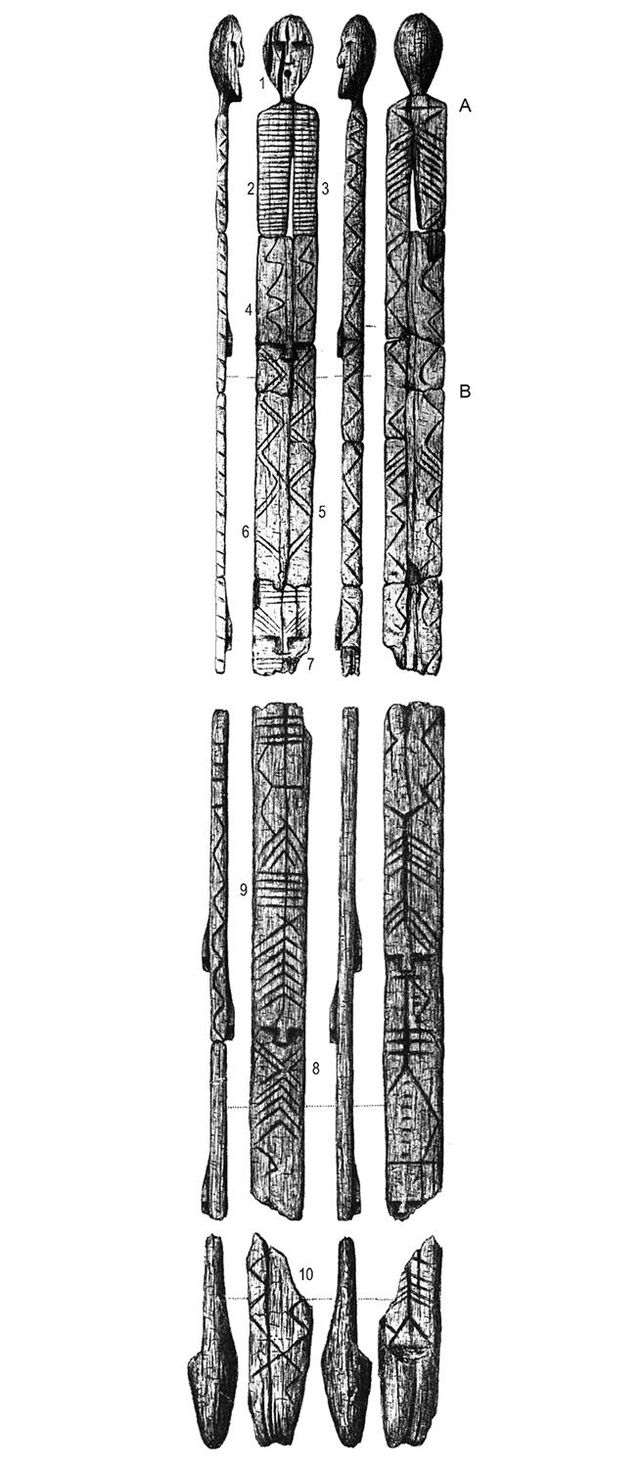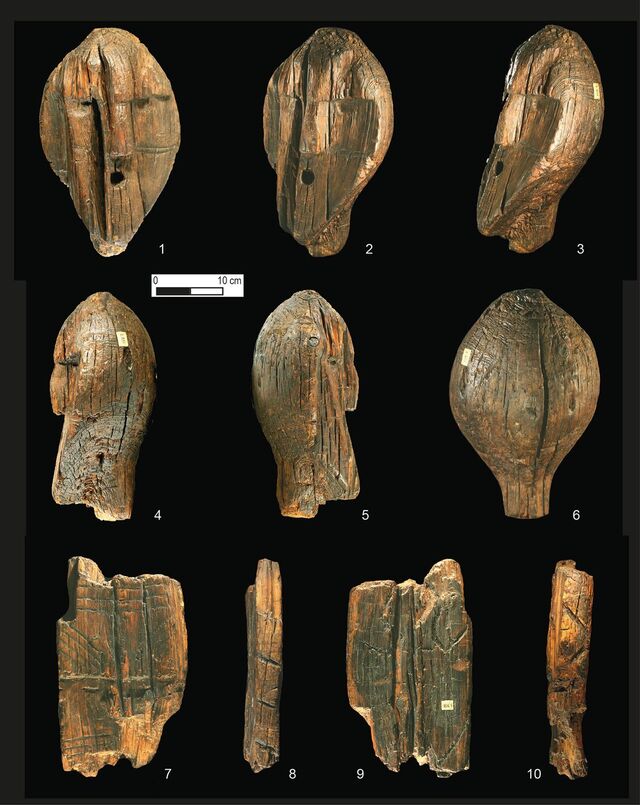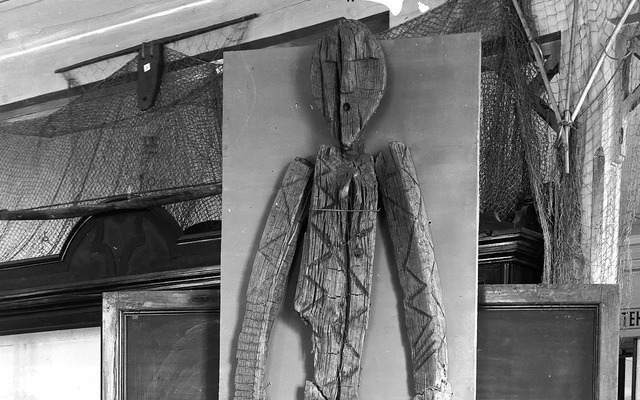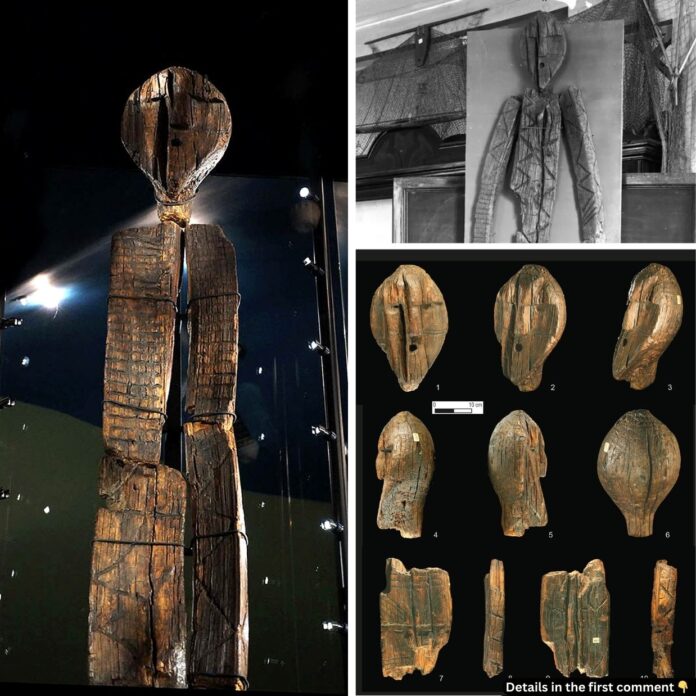Deep in the peat bogs of Russia’s Ural Mountains lies a treasure of unprecedented historical value—the Shigir Idol. This towering, human-like wooden sculpture, carved an astonishing 11,500 years ago, stands as a testament to the creativity, spirituality, and ingenuity of early human societies. More than twice as old as the Great Pyramid of Egypt, the Shigir Idol offers a glimpse into the spiritual and cultural life of Mesolithic hunter-gatherers. Let’s unravel the story of this ancient masterpiece, from its discovery to its significance in reshaping our understanding of early human art and symbolism.
Discovery and Early Studies
The Shigir Idol was unearthed in 1894 by gold miners in the Shigir peat bogs of Russia’s Middle Ural Mountains. The bog’s anaerobic conditions had preserved the larch wood remarkably well, ensuring that this ancient sculpture survived the passage of time. Initially standing over 17 feet tall, the Idol was meticulously pieced together from fragments found in the bog.


In the late 1990s, radiocarbon dating placed the sculpture’s age at 9,900 years, already making it the oldest wooden monumental sculpture in the world. However, a more comprehensive analysis in recent years revealed its true age: an extraordinary 11,500 years. Crafted shortly after the last Ice Age, the Idol stands as one of humanity’s oldest surviving artistic expressions.
Discover the mystery of the 11,500-year-old Shigir Idol in this Ancient Architects video – watch to explore the secrets and significance of this incredible prehistoric artifact!
Design and Features of the Shigir Idol
The Shigir Idol is a masterpiece of early artistry. Originally carved from a single larch tree, the sculpture was adorned with geometric patterns and anthropomorphic faces. Despite the loss of some sections over time, it still stands an impressive 11.1 feet tall today.

The ornamentation on the Idol is particularly striking. Its body is decorated with geometric motifs, including zigzags and herringbone patterns, interspersed with at least seven faces carved into the wood. These faces, each unique, are thought to represent spirits, deities, or ancestral figures. Some were discovered as recently as 2014, showcasing the Idol’s ability to surprise researchers even over a century after its discovery.
A Window into Mesolithic Spirituality
The Shigir Idol’s design suggests it held deep spiritual significance for the Mesolithic societies that created it. Early hunter-gatherers likely used the Idol as a totemic symbol, connecting their community to their ancestors, deities, or natural forces. The prominence of the carved faces and the geometric patterns may reflect a system of belief tied to myths, rituals, or cosmological ideas.
This wooden sculpture is not merely an artifact; it is a narrative frozen in time. Its intricate carvings tell a story of a society capable of abstract thought, symbolic communication, and artistic expression. It challenges the assumption that such complexity only arose with the advent of agriculture and permanent settlements.
Expanding the Focus of Early Human Studies
The Shigir Idol is not only a marvel of craftsmanship but also a call to expand our focus on early human studies. Much archaeological research has concentrated on the Fertile Crescent in the Middle East, often referred to as the “Cradle of Civilization.” However, the Shigir Idol demonstrates that advanced cultural and artistic development was occurring far from this region.
The Ural Mountains, once considered peripheral to early human history, are now recognized as a hub of innovation and creativity. The Shigir Idol underscores the need to study diverse geographic regions to gain a fuller understanding of human evolution and culture.

Scientific Advances and Collaboration
Modern scientific techniques have played a pivotal role in unraveling the Shigir Idol’s secrets. Radiocarbon dating was crucial in determining its age, while detailed analysis of the carvings revealed the artists’ methods and tools. Researchers noted that the Idol’s creators used stone tools to carve the larch wood, a labor-intensive process that highlights their skill and dedication.
International collaboration has also been key. Researchers from Russia, Germany, and other countries have worked together to study the Idol, with institutions like the Sverdlovsk Regional Museum playing a central role. This global effort underscores the shared human interest in preserving and understanding our ancient past.
Public Display and Global Fascination
Today, the Shigir Idol is housed in the Sverdlovsk Regional Museum, where it draws visitors from around the world. Standing before this towering sculpture, one cannot help but feel a connection to the people who created it thousands of years ago. The Idol’s presence in the museum serves as a bridge between ancient and modern times, inviting us to reflect on the universality of human creativity.
The Idol’s discovery and continued study have also sparked global interest in early art and symbolism. It challenges modern audiences to consider the ingenuity of ancient societies and the complexity of their beliefs and practices.
The Mysteries That Remain
Despite all that we’ve learned, the Shigir Idol still holds many secrets. What do the geometric patterns and faces truly represent? Were they meant to ward off spirits, honor ancestors, or tell a story? How was the Idol used in rituals or daily life? These questions remain unanswered, inviting further study and interpretation.
Additionally, the Idol raises broader questions about the role of art in human history. How did early humans develop the capacity for symbolic thought? What role did art play in their social and spiritual lives? The Shigir Idol stands as a tantalizing clue in this ongoing quest for understanding.
Conclusion
The Shigir Idol is far more than a wooden sculpture; it is a testament to the creativity, spirituality, and ingenuity of early humans. Standing as the world’s oldest wooden monumental sculpture, it bridges the gap between our distant past and present, offering a glimpse into the lives and beliefs of Mesolithic hunter-gatherers.
As researchers continue to study this extraordinary artifact, its significance only grows. The Shigir Idol reminds us of the universality of human creativity and the enduring power of art to connect us across millennia. Preserving and understanding this ancient masterpiece is not just a scientific endeavor—it is a celebration of humanity’s shared history and cultural heritage.
